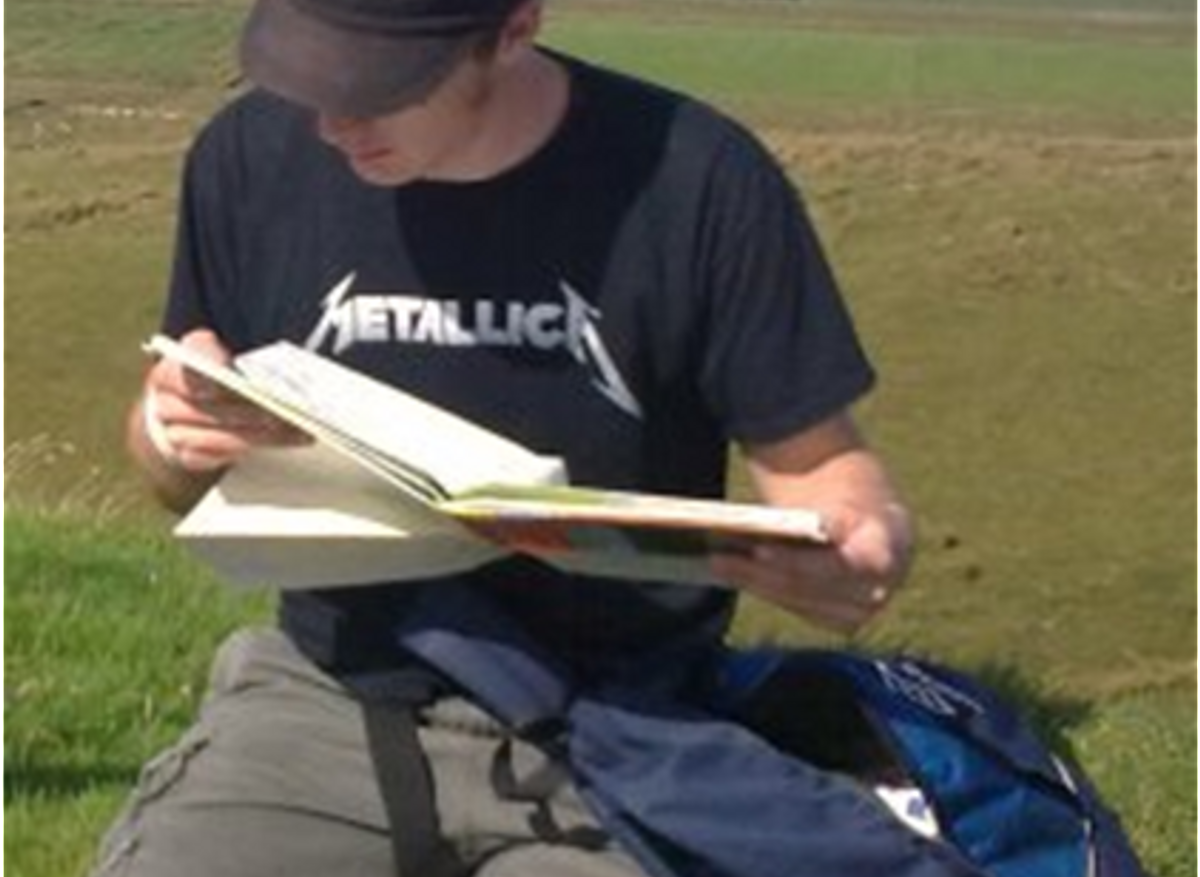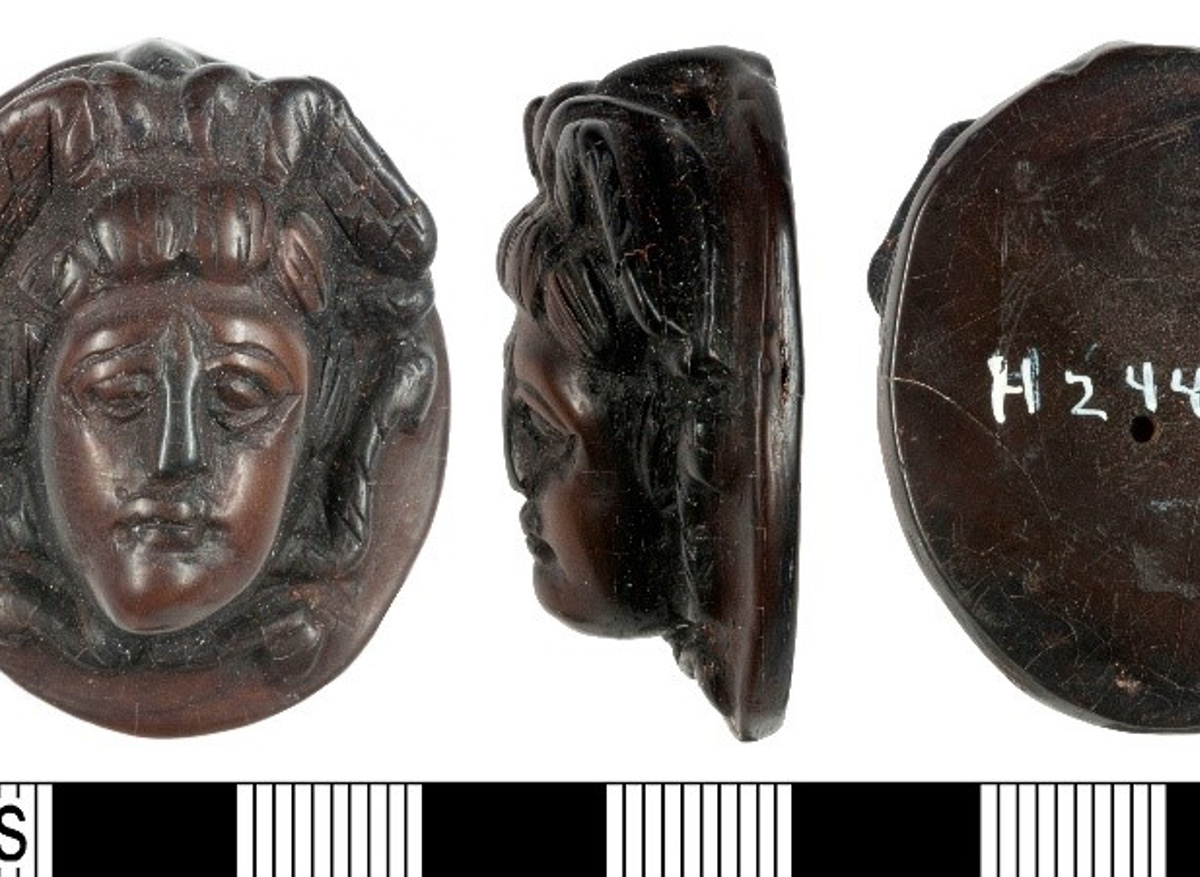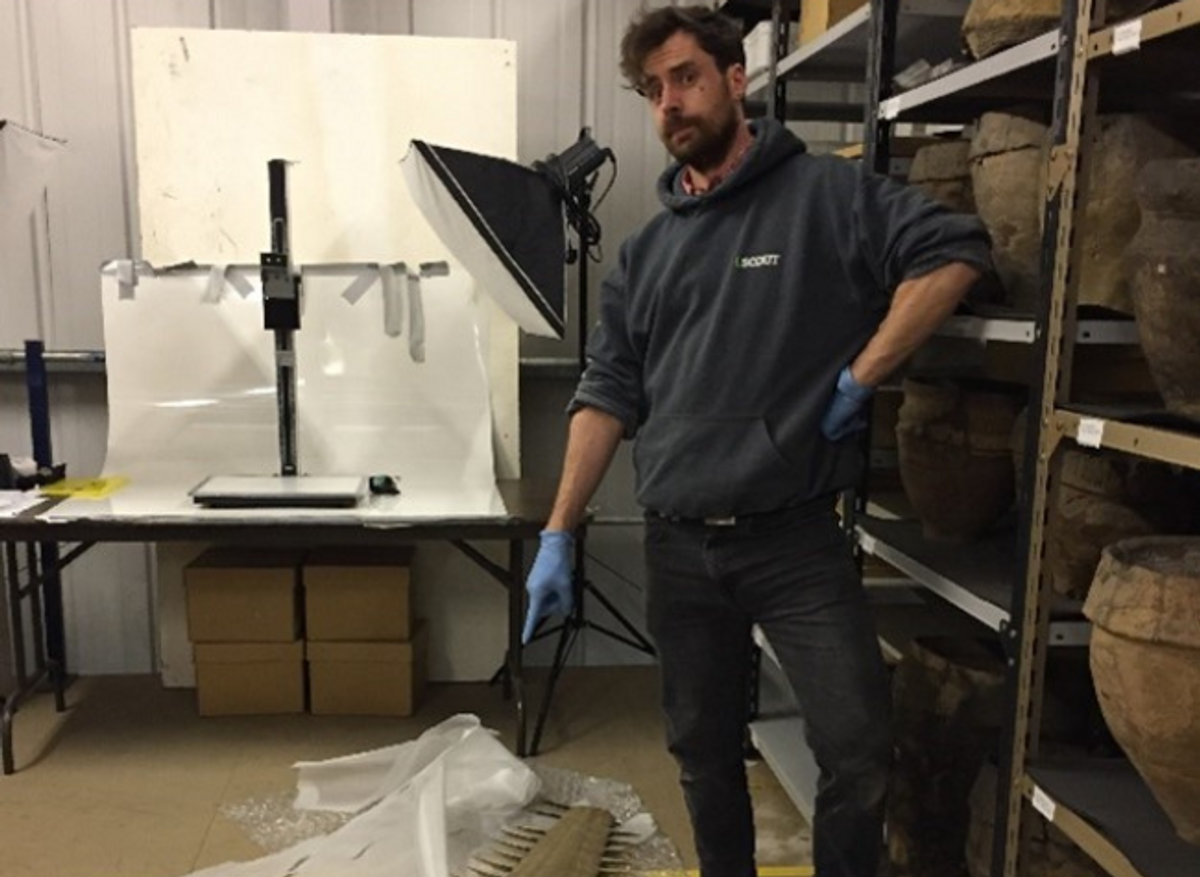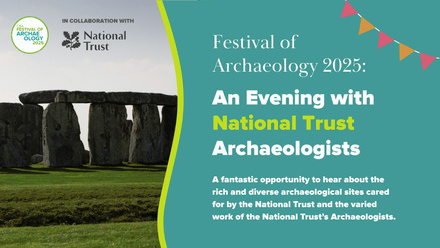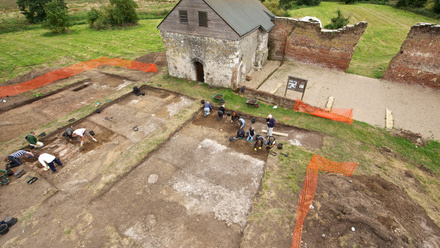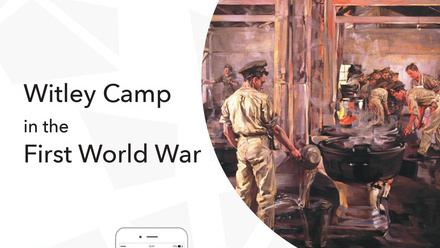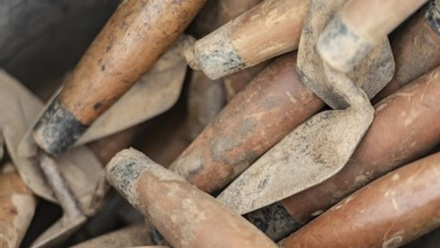The research
My forthcoming research monograph with Bloomsbury is very recently under contract and so I am at the very beginning of this process. Amulets in Roman Britain: Magic, Materiality, Meaning and Use is an adaptation of my PhD research at the Open University and should be available in 2026. My approach centralises the role of individual magical objects and aims to investigate them within their unique archaeological contexts and as broader forms of objects. It is underpinned by theoretical approaches to sensory archaeologies, phenomenology, and materiality and will develop new models of thinking about the use of amulets in Roman Britain.
A Jet Gorgoneion amulet from York. It is a Roman pendant depicting the Medusa made from a material with unusual properties, including being electrostatic. ©York Museums Trust (Yorkshire Museum) [CC BY SA 4.0]
Becoming an Archaeologist
After a BA(hons) in Ancient History and Archaeology and MA Rome & Its Neighbours at the University of Leicester I have worked as part of the curatorial team at the Yorkshire Museum since 2010. Whilst my research focus is in Roman Britain my professional work spans the history and archaeology of Yorkshire from the Palaeolithic to the Post-Medieval periods. From 2016 to 2022 I completed by PhD part-time at the Open University and have continued with the Yorkshire Museum throughout.
Trying to figure out Hadrian’s Wall as an undergraduate at the University of Leicester.
My writing process
My approach to writing has changed over the years as my circumstances changed. As a student I had dedicated blocks of time for research and writing. Now in 2023 as a working, recent graduate and parent to a 1-year old, my research and writing takes place in the margins of my time; on evenings, during baby’s nap-times, even in the middle of the night when we are up. As the research takes my PhD research and adapts, expands, and improves on the central concept it has started with a huge cutting-up exercise to focus on the key themes which I want to highlight. As ever, my process involves a big brain-dump of information and I am often throwing in new points into a notes document on my phone when I’ve had an idea I need to come back to.
Day-to-day life as an archaeologist
My research happens in the margins of my time, but my day job as a museums archaeologist is wonderfully variable. In the past few weeks I’ve worked with external researchers to take aDNA samples of a prehistoric skeleton and to provide access to Anglian cross fragments for polychrome analysis. In my own projects I’ve investigated Roman tile stamps on roof tiles in York, packed and sent some stonework on loan to another museum, and made formal condition checks of Medieval objects. There has been a lot of paperwork and online meetings as well, but in the strange balance of museum work I’ve also driven two different types of fork-lift truck and filmed some TikTok videos.
Curating is a strange world: AP at work in the Yorkshire Museum stores.
Getting involved in archaeology
How can people get involved in archaeology? There are so many ways, the forefront of which is probably formal training in the subject but this is not a pre-requisite. There is so much public engagement available now and community-scale excavations and investigations for people to get their boots mucky – check out Council for British Archaeology’s website, but also make contact with local history groups. The developments in portable digital technology make remote involvement in citizen science projects so accessible. Historic England’s recently launched Missing Pieces Project invites digital contributes from the comfort of your home, so do check that out.

